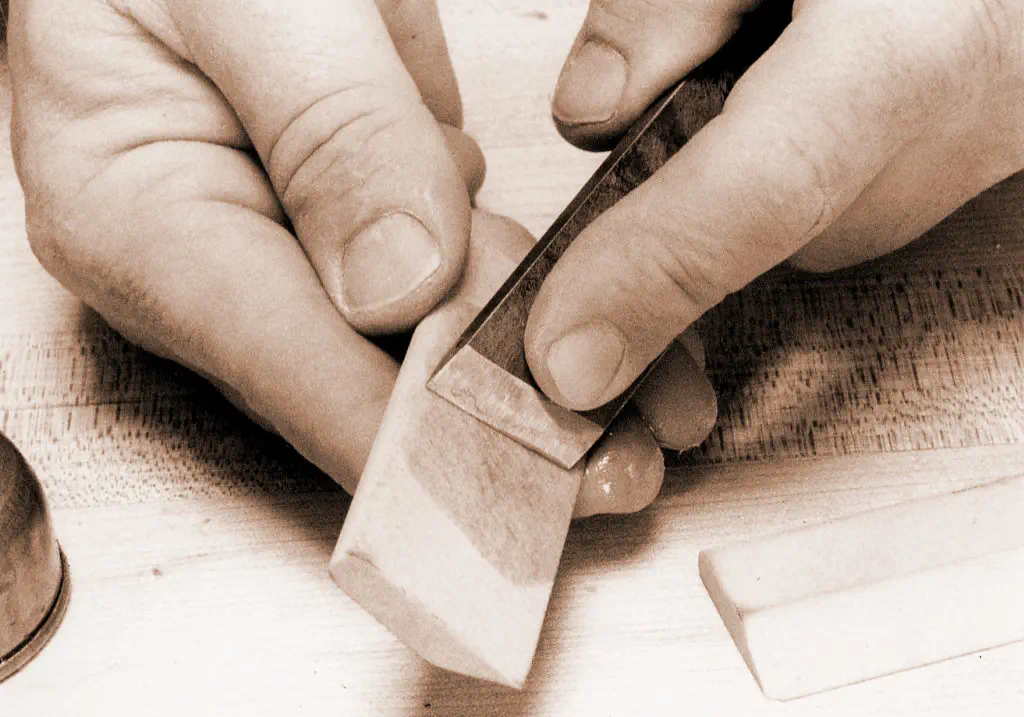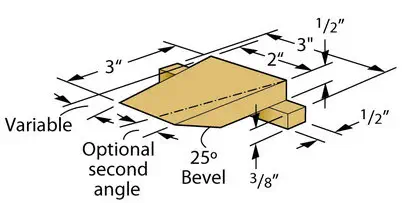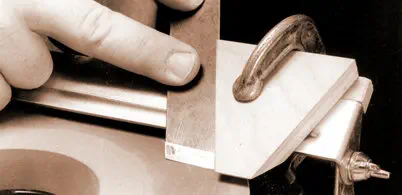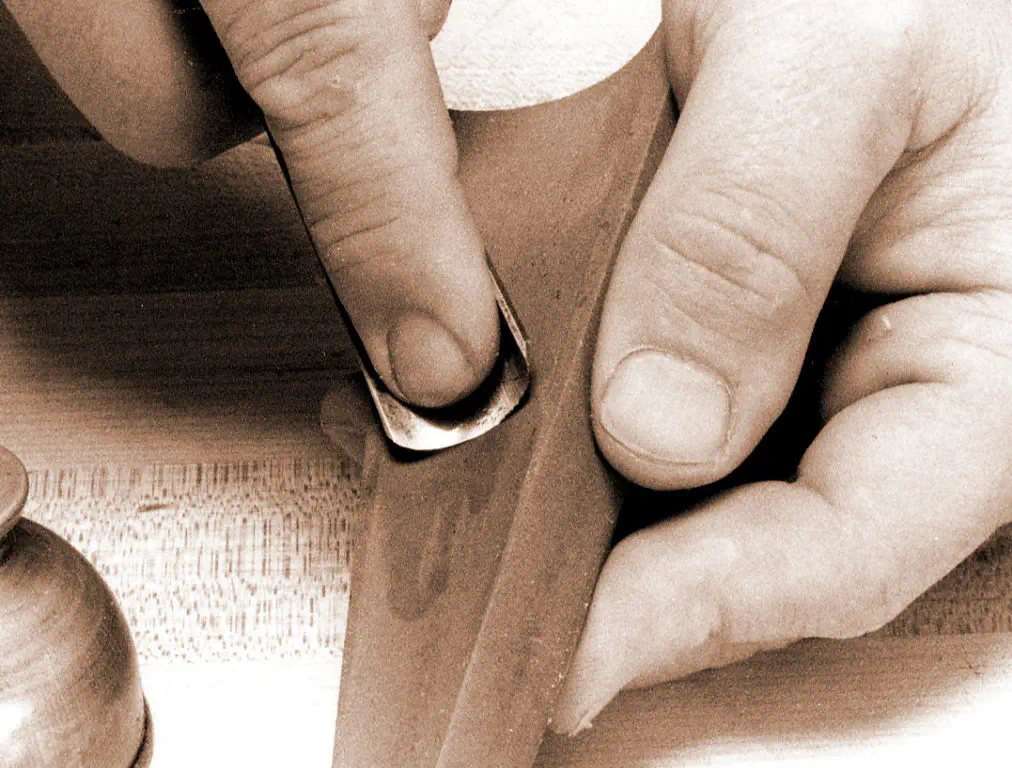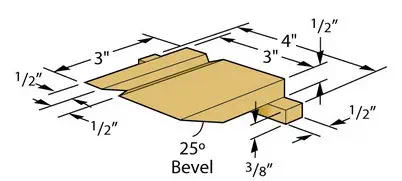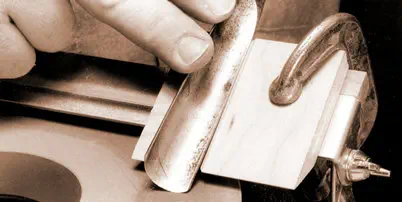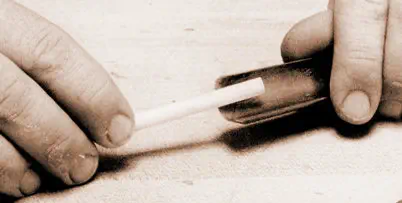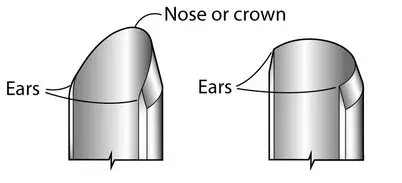SHARPENING A SKEW
1-When sharpening a skew by hand, you must grind without the benefit of a guide. Feel for the correct angle, resting the bevel flat on the stone. Then lock your wrist in place to maintain that angle as you sharpen. If you have trouble feeling the angle on a large stone, try a smaller slip stone. Press the stone against the bevel with your fingertips.


